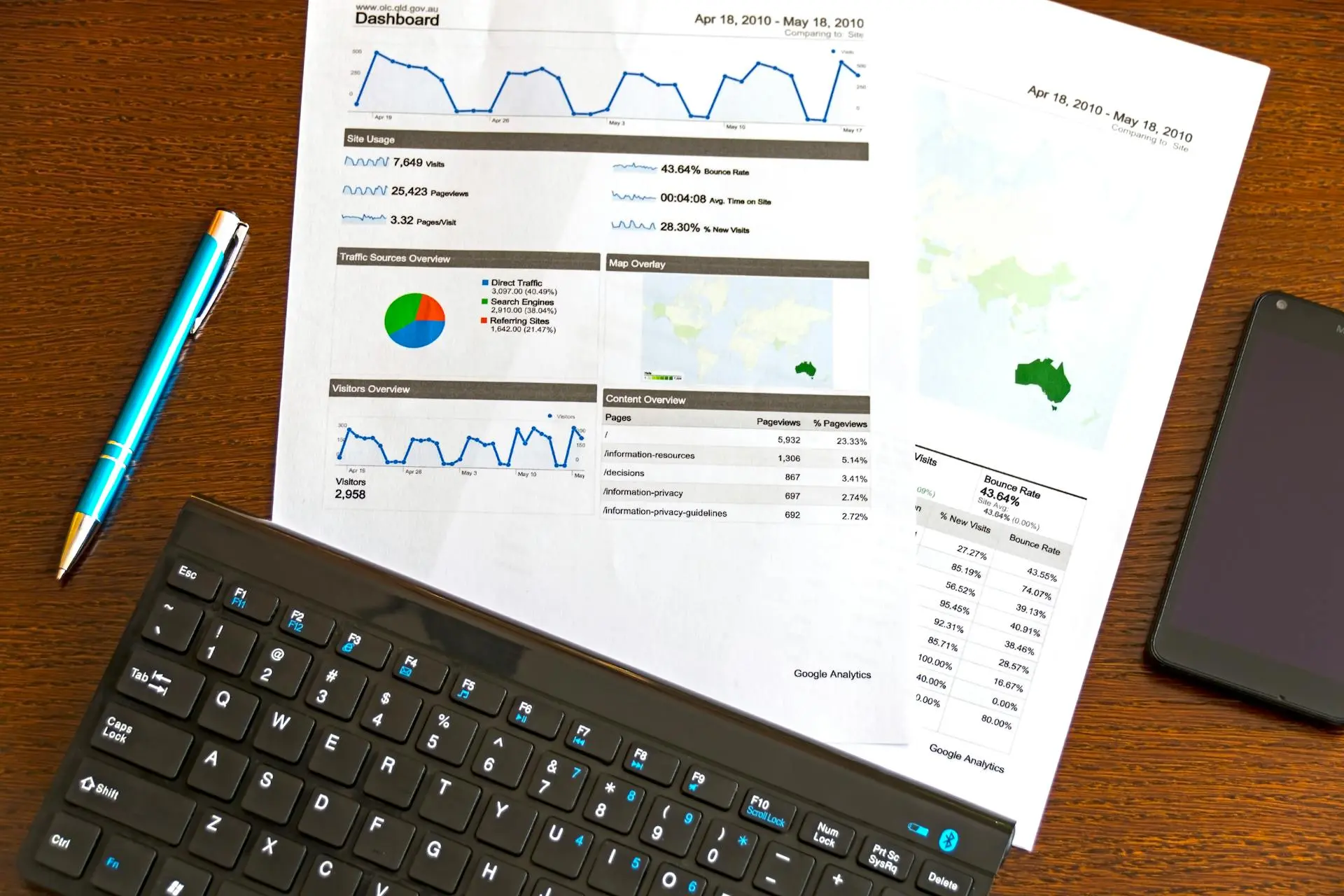Our team at SaneChoice and industry experts craft our articles to help you gain a deeper understanding of technology.
SEO Analysis Tools: Improve Your Rankings with Insights

Search Engine Optimisation (SEO) has become an indispensable strategy for businesses seeking online visibility and success. SEO analysis tools play a crucial role in this endeavour, providing valuable insights into a website’s performance and identifying areas for improvement. These tools comprehensively analyse various factors that influence a website’s search engine rankings, enabling website owners and digital marketers to make data-driven decisions.
As the competition for online visibility intensifies, it has become increasingly important to leverage the power of SEO analysis tools. These tools help identify and address technical issues and provide valuable insights into user behaviour, content optimisation, and competitor analysis. By utilising these tools, businesses can gain a competitive edge and ensure their website is optimised for search engines, ultimately driving more organic traffic and enhancing their online presence.
Whether you’re a small business owner, a digital marketer, or an SEO professional, understanding the importance of SEO analysis tools is paramount. In this article, we will explore the features to look for in a free SEO analysis tool, introduce some of the top free options available, and provide actionable steps to leverage these tools to improve your website’s performance.
The Importance of SEO Analysis for Your Website
A website is often the first point of contact between a business and its potential customers. As such, ensuring that your website is optimised for search engines is crucial, making it easily discoverable and accessible to your target audience. SEO analysis plays a vital role in achieving this goal by providing valuable insights into your website’s performance.
One of the primary benefits of conducting regular SEO analysis is identifying and addressing technical issues hindering your website’s visibility and search engine rankings. These issues can range from broken links and slow page load times to duplicate content and improper use of meta tags. By identifying and resolving these issues, you can improve your website’s overall user experience and increase its chances of ranking higher in search engine results pages (SERPs).
SEO analysis tools can provide valuable insights into user behaviour, such as the most popular pages, bounce rates, and average session duration. This information can help you understand how users interact with your website and identify areas for improvement, such as optimising content or enhancing navigation.
Additionally, SEO analysis tools can assist in monitoring and analysing your competitors’ online presence. By understanding their strategies and identifying their strengths and weaknesses, you can gain a competitive advantage and develop more effective SEO strategies tailored to your target audience.
Regular SEO analysis is crucial for ensuring the long-term success of your website. By leveraging these tools’ insights, you can make informed decisions, optimise your website for better search engine visibility, and ultimately drive more organic traffic and potential customers to your business.
Features to Look for in a Free SEO Analysis Tool
When selecting a free SEO analysis tool, it’s essential to consider the features and capabilities that best align with your website’s needs. While many free tools offer basic functionality, some offer more comprehensive and advanced features. Here are some key features to look for:
- Comprehensive Site Audit: A thorough site audit is a fundamental feature of any SEO analysis tool. This feature should analyse various aspects of your website, including technical issues, on-page optimisation, content quality, and more. It should provide detailed reports and actionable recommendations to help you identify and address potential problems.
- Keyword Research and Tracking: Effective keyword research and tracking are crucial for optimising your website’s content and improving its visibility in search engine results. Look for a tool that offers keyword suggestions, search volume data, and the ability to track your rankings for specific keywords over time.
- Backlink Analysis: Backlinks, or inbound links from other websites, are a significant ranking factor for search engines. A robust SEO analysis tool should provide detailed information about your website’s backlink profile, including the quality and relevance of the linking websites.
- Competitor Analysis: Understanding your competitors’ online strategies can give you a competitive edge. Look for a tool that allows you to analyse your competitors’ websites, including their backlink profiles, keyword rankings, and on-page optimisation tactics.
- Mobile Optimization Analysis: With the increasing use of mobile devices for internet browsing, ensuring your website is optimised for mobile users is crucial. A comprehensive SEO analysis tool should evaluate your website’s mobile-friendliness and provide recommendations for improvement.
- User Experience Analysis: User experience significantly affects search engine rankings and overall website performance. Look for a tool that analyses page load times, navigation structure, and usability to help you identify and address potential issues that may negatively impact the user experience.
- Reporting and Data Visualisation: Effective data visualization and reporting capabilities can help you understand and interpret the analysis results more easily. Look for a tool that offers customisable reports, charts, and graphs to help you quickly identify trends and areas for improvement.
While free SEO analysis tools may have limitations compared to their paid counterparts, many offer robust features that can provide valuable insights and help you optimise your website’s performance. You can unlock your website’s full potential without breaking the bank by carefully evaluating the available features and selecting the tool that best aligns with your needs.
Top Free SEO Analysis Tools Available Today
Several free options stand out in the vast landscape of SEO analysis tools, offering a comprehensive suite of features and capabilities. Here are some of the top free SEO analysis tools available today:
- Google Search Console: Google provides a powerful and essential tool for website owners and SEO professionals. It offers insights into your website’s performance in Google Search, including search analytics, crawl errors, and security issues. Additionally, it allows you to submit new content for indexing and monitor your website’s mobile usability.
- Ubersuggest: Developed by Neil Patel, a renowned digital marketer, Ubersuggest is a free keyword research and analysis tool. It provides valuable insights into keyword search volume, competition, and content ideas. Additionally, it offers backlink analysis, site audit, and competitor analysis features, making it a comprehensive SEO analysis solution.
- SEMrush (Free Trial): While SEMrush offers a premium subscription, it also provides a robust free trial that includes various SEO analysis features. The free trial allows you to research keywords, analyse backlinks, and perform site audits. It also provides insights into your competitors’ online strategies, making it a valuable tool for competitive analysis.
- Ahrefs Webmaster Tools: Ahrefs is a popular SEO tool known for its extensive backlink analysis capabilities. While the full suite of features requires a paid subscription, Ahrefs Webmaster Tools offers a free version that includes site audits, backlink analysis, and rank tracking for a limited number of keywords and projects.
- Screaming Frog SEO Spider: Screaming Frog SEO Spider is a free website crawler and auditing tool that analyses various on-page and technical SEO elements. It provides detailed reports on broken links, duplicate content, and meta-tag optimisation, making it a valuable resource for identifying and addressing website issues.
- GTmetrix: GTmetrix is a free website performance analysis tool that evaluates page load times, page size, and other performance metrics. It provides detailed reports and recommendations to help you optimise your website’s speed and performance, which are crucial factors for user experience and search engine rankings.
These are a few examples of today’s top free SEO analysis tools. Each tool offers unique features and capabilities, so it’s essential to evaluate your specific needs and choose the one that best aligns with your website’s requirements. SaneChoice even has a free SEO Analsyer and SEO tools that can help you get ahead, so why not check out these free and paid services, too?
How to Use an SEO Analysis Tool to Improve Your Website
An SEO analysis tool is crucial for unlocking your website’s full potential and achieving better search engine visibility. Here’s a step-by-step guide on how to use an SEO analysis tool to improve your website:
- Set Clear Goals: Before diving into the analysis, defining your goals and objectives is essential. Are you aiming to increase organic traffic, improve user engagement, or boost conversions? Clear goals will help you focus your efforts and prioritise the areas requiring immediate attention.
- Conduct a Comprehensive Site Audit: Conduct a thorough site audit using your chosen SEO analysis tool. This will provide you with a detailed report on various aspects of your website, including technical issues, on-page optimisation, content quality, and more. Pay close attention to any critical errors or warnings highlighted by the tool.
- Analyse Keyword Performance: Use your SEO analysis tool’s keyword research and tracking features to evaluate your website’s performance for relevant keywords. Identify the keywords driving the most traffic to your site and those with the potential for improvement. This information will guide your content optimisation and keyword targeting strategies.
- Evaluate Backlink Profile: Backlinks are a crucial ranking factor for search engines. Utilise the backlink analysis feature of your SEO analysis tool to assess the quality and relevance of the websites linking to your site. Look for opportunities to acquire high-quality backlinks from authoritative and relevant sources.
- Monitor Competitor Activity: Use the competitor analysis feature to gain insights into your competitors’ online strategies. Analyse their backlink profiles, keyword rankings, and on-page optimisation tactics. This information can help you identify areas where you can outperform your competitors and develop more effective strategies.
- Prioritise and Address Issues: Based on the analysis results, create a prioritized list of issues and areas for improvement. First, address critical errors and high-impact opportunities, such as fixing broken links, optimising meta tags, and improving page load times.
- Implement Recommended Changes: Once you have identified the necessary changes, implement them on your website. This may involve updating content, optimising meta tags, improving site structure, or addressing technical issues identified by the analysis tool.
- Monitor and Iterate: SEO is an ongoing process, and regular monitoring and iteration are essential for sustained success. Continue to use your SEO analysis tool to track your website’s performance, monitor keyword rankings, and identify new opportunities for improvement. Adjust your strategies as needed based on the analysis’s results.
By following these steps and leveraging the insights provided by your chosen SEO analysis tool, you can effectively optimise your website for better search engine visibility, increased organic traffic, and improved user engagement.
Common SEO Issues Uncovered by Analysis Tools
SEO analysis tools are designed to identify a wide range of issues that can negatively impact a website’s search engine visibility and performance. While the specific issues may vary depending on the tool and the website’s unique characteristics, there are several common problems that frequently arise during an SEO analysis. Here are some of the most prevalent issues uncovered by analysis tools:
- Technical SEO Issues:
- Broken links and redirects
- Duplicate content
- Missing or incorrect meta tags
- Slow page load times
- Improper use of header tags
- Lack of mobile responsiveness
- On-Page Optimization Issues:
- Keyword stuffing or lack of keyword optimisation
- Insufficient or low-quality content
- Poor internal linking structure
- Lack of multimedia elements (images, videos, etc.)
- Poorly optimised title tags and meta descriptions
- Content Quality Issues:
- Thin or duplicated content
- Lack of freshness and relevance
- Poor readability and user engagement
- Insufficient keyword coverage
- Backlink Issues:
- Low-quality or irrelevant backlinks
- Excessive or unnatural link building practices
- Lack of authoritative and relevant backlinks
- Broken or outdated backlinks
- User Experience Issues:
- Poor navigation and site structure
- Confusing or cluttered layout
- Lack of mobile-friendliness
- Slow page load times
- Indexing and Crawlability Issues:
- Blocked or restricted crawling by search engines
- Improper use of robots.txt and sitemap files
- Duplicate or thin content preventing proper indexing
By identifying and addressing these common SEO issues, website owners and digital marketers can improve their website’s search engine visibility, enhance user experience, and ultimately drive more organic traffic and conversions.
Interpreting Your SEO Analysis Results
Once you’ve conducted an SEO analysis using a free tool, it’s crucial to interpret the results accurately to make informed decisions and take appropriate actions. Here’s a guide to help you interpret your SEO analysis results effectively:
- Prioritise Critical Issues: SEO analysis tools typically categorise issues based on their severity, such as errors, warnings, and recommendations. Start by addressing the critical errors and high-priority issues first, as these are likely to have the most significant impact on your website’s search engine visibility and performance.
- Understand the Context: While SEO analysis tools provide valuable insights, it’s essential to understand the context in which the issues are identified. Some recommendations may not be applicable or relevant to your specific website or industry. Carefully evaluate each issue and determine its relevance and potential impact.
- Analyse Keyword Performance: Pay close attention to the keyword performance section of your analysis report. Identify the keywords that are driving traffic to your website and those that have the potential for improvement. Use this information to refine your content strategy and optimise your pages for relevant keywords.
- Evaluate Backlink Quality: A strong backlink profile is crucial for search engine rankings. Analyse the quality and relevance of the backlinks pointing to your website. Look for opportunities to acquire high-quality backlinks from authoritative and relevant sources, while also identifying and disavowing any low-quality or spammy backlinks.
- Assess Technical SEO Factors: Technical SEO factors, such as site structure, crawlability, and mobile responsiveness, can significantly impact your website’s performance. Pay close attention to any technical issues identified by the analysis tool and prioritise addressing them to ensure a seamless user experience and optimal search engine visibility.
- Monitor Competitor Activity: Use the competitor analysis feature to gain insights into your competitors’ online strategies. Identify their strengths and weaknesses, and use this information to develop more effective tactics and outperform them in the search engine results pages (SERPs).
- Establish Benchmarks and Track Progress: Set benchmarks based on your current performance and track your progress over time. Monitor key metrics, such as organic traffic, keyword rankings, and backlink acquisition, to evaluate the effectiveness of your SEO efforts and make data-driven decisions.
By carefully interpreting your SEO analysis results and taking a holistic approach, you can gain valuable insights into your website’s performance, identify areas for improvement, and develop a comprehensive SEO strategy to unlock your website’s full potential.
Actionable Steps After Receiving Your SEO Analysis
After conducting an SEO analysis and interpreting the results, it’s essential to take actionable steps to address the identified issues and optimise your website for better search engine visibility and performance. Here are some actionable steps you can take:
- Develop a Prioritised Action Plan: Based on the critical issues and high-impact opportunities identified in your SEO analysis, create a prioritised action plan. Prioritise tasks that address technical SEO issues, on-page optimisation, and content quality, as these factors can have a significant impact on your website’s search engine rankings.
- Fix Technical SEO Issues: Address any technical SEO issues identified in your analysis, such as broken links, redirects, duplicate content, and crawlability issues. These issues can prevent search engines from properly indexing and understanding your website, hindering its visibility in search results.
- Optimise On-Page Elements: Implement the recommended on-page optimisation strategies, including optimising title tags, meta descriptions, header tags, and content for relevant keywords. Ensure that your content is high-quality, engaging, and provides value to your target audience.
- Enhance User Experience: Improve your website’s user experience by addressing any issues related to site structure, navigation, mobile responsiveness, and page load times. A positive user experience can lead to lower bounce rates, increased engagement, and potentially better search engine rankings.
- Acquire High-Quality Backlinks: Develop a strategic link-building campaign to acquire high-quality backlinks from authoritative and relevant websites. Focus on creating valuable content, building relationships with industry influencers, and leveraging tactics such as guest blogging and broken link building.
- Monitor and Analyse Performance: Regularly monitor your website’s performance using analytics tools and track key metrics such as organic traffic, keyword rankings, and backlink acquisition. Analyse the impact of your SEO efforts and make data-driven decisions to refine your strategies as needed.
- Stay Up-to-Date with SEO Best Practices: SEO is an ever-evolving field, and search engine algorithms are constantly changing. Stay informed about the latest SEO trends, best practices, and algorithm updates to ensure your strategies remain effective and compliant.
- Collaborate with Professionals: If you lack the expertise or resources to implement certain SEO strategies effectively, consider collaborating with experienced SEO professionals or agencies. They can provide valuable insights, guidance, and support to help you achieve your desired results.
By taking these actionable steps and consistently monitoring and refining your SEO efforts, you can unlock your website’s full potential, improve its search engine visibility, and drive more organic traffic and conversions to your business.
Conclusion: Elevating Your Website with the Right SEO Analysis Tool
In today’s digital landscape, where competition for online visibility is fierce, leveraging the power of SEO analysis tools has become a necessity for businesses seeking to thrive. These tools provide invaluable insights into your website’s performance, enabling you to identify areas for improvement and optimise your website for better search engine rankings and increased organic traffic.
By conducting regular SEO analyses and implementing the recommended strategies, you can stay ahead of the curve and outperform your competitors. Free SEO analysis tools like Google Search Console, Ubersuggest, and Screaming Frog SEO Spider offer a wealth of features and capabilities, making it easier than ever to monitor and enhance your website’s performance.
Remember, SEO is an ongoing process, and success requires a commitment to continuous learning, adaptation, and optimisation. Embrace the insights provided by your chosen SEO analysis tool, and use them as a roadmap to unlock your website’s full potential.
Elevate your online presence, drive more qualified traffic, and ultimately, achieve your business goals by leveraging the power of free SEO analysis tools. Embark on this journey today and witness the transformative impact on your website’s visibility and success.





